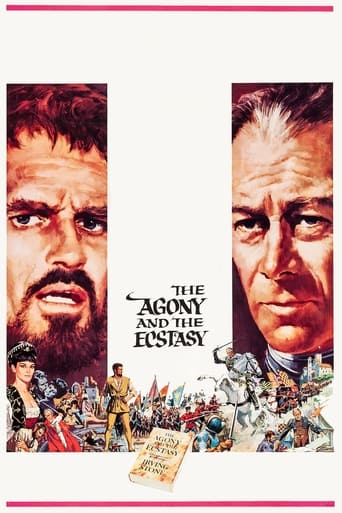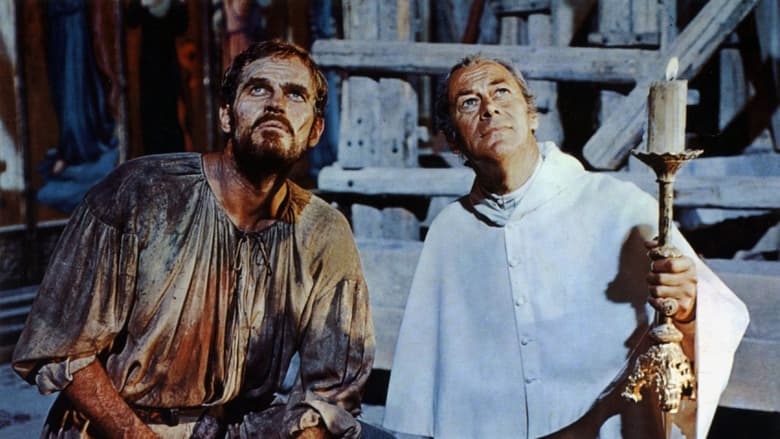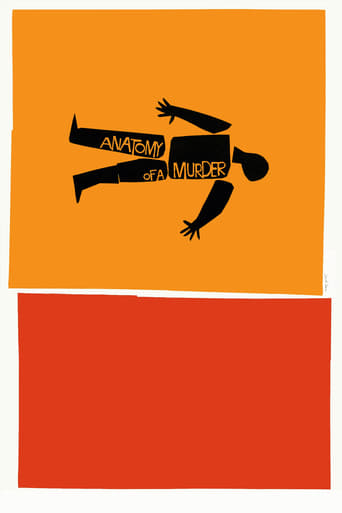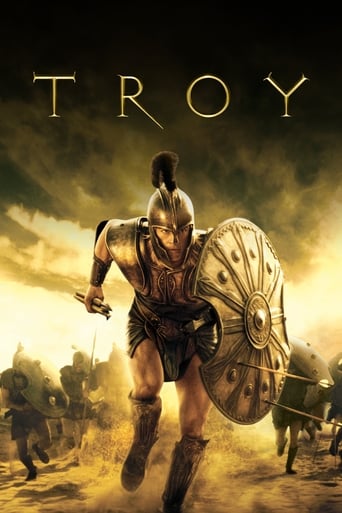The Agony and the Ecstasy (1965)
During the Italian Renaissance, Pope Julius II contracts the influential artist Michelangelo to sculpt 40 statues for his tomb. When the pope changes his mind and asks the sculptor to paint a mural in the Sistine Chapel, Michelangelo doubts his painting skills and abandons the project. Divine inspiration returns Michelangelo to the mural, but his artistic vision clashes with the pope's demanding personality and threatens the success of the historic painting.
Watch Trailer
Cast



Similar titles
Reviews
Let's be realistic.
Wow! What a bizarre film! Unfortunately the few funny moments there were were quite overshadowed by it's completely weird and random vibe throughout.
It is an exhilarating, distressing, funny and profound film, with one of the more memorable film scores in years,
Great story, amazing characters, superb action, enthralling cinematography. Yes, this is something I am glad I spent money on.
I absolutely love this film! As a performing artist and art enthusiast, I believe this film does a phenomenal job representing the struggle and beauty of creating something. The Agony and the Ecstasy also demonstrates very well how often times, we as people have a bitter-sweet relationship with things we have to do but want to do well. Michelangelo didn't want to paint the ceiling in the film, but if he was going to, he wanted it to be the best work he could do at the time. This kind of motivation and dedication to your craft is very inspirational to me and this is my favorite film to watch when I am looking for motivation in my life. I noticed when watching the film, the style in which it is filmed reminds me of the kinds of shots and filters you might see in Ben-Hur or El Cid, which would make sense because this is another remarkable Charlton Heston film. This is definitely a great film I would recommend to anybody!
Already renowned as a master sculptor, Michelangelo is commanded by Pope Julius II to paint the ceiling of his Sistine Chapel, and he reluctantly accepts the commission. Based on Irving Stone's best-selling novel, "The Agony and the Ecstasy" is a thin retelling of the artist's creative struggle and his verbal sparring with the Pope. Carol Reed's lavish production is shamelessly padded with a documentary prologue about Michelangelo's sculpture, an intermission little more than an hour into the movie, exit music, and numerous atmospheric shots that add little but running time to the story. However, the padding and extras provided enough perceived value to warrant a reserved-seat roadshow presentation at higher ticket prices, which was a popular venue for prestige films in the 1950's and 1960's. Unfortunately, this obviously big-budget production exemplifies the old adage that the whole is less than the sum of its parts.Charlton Heston has a granite face and monumental physique that suggests one of Michelangelo's sculptures, and, while he has on-screen presence, his acting range falls short of the demanding role of a tortured artist. Rex Harrison, on the other hand, is outstanding as the warrior pope, a complex man balancing spiritual and worldly ambitions. Fresh from an Academy Award nomination for his Julius Caesar in "Cleopatra" and a second nomination and the Oscar for his Henry Higgins in "My Fair Lady," Harrison deserved a least a third nod for this film. The rest of the cast is adequate, although Diane Cilento, who does the best she can with a thankless role, is little more than a bone thrown to the female audience in what is essentially a male-centric drama. Michelangelo is among the world's most famous historical gay men, and, while Philip Dunne's screenplay alludes to the artist's sexuality, the script blurs the issue and sidesteps a direct confrontation; Cilento's ambiguous relationship with the artist was likely intended to throw off all but the most knowledgeable viewers.Aside from Harrison's performance, "The Agony and the Ecstasy" is worthy viewing as a visual feast. Fresh from Oscar-winning work on "Cleopatra," the Twentieth Century Fox design team of John DeCuir and Jack Martin Smith stunningly recreated the ecclesiastical glory of 16th century Rome. Among other Oscar winners for "Cleopatra" were Vittorio Nino Novarese, whose costumes glow in reds, crimsons, and golds; and Leon Shamroy, whose color cinematography gloriously captures the period detail. A fine score by Alex North, another veteran of "Cleopatra," further enhances the visuals. Carol Reed's adaptation of "The Agony and the Ecstasy" is eye, and some times ear, candy, especially for those interested in art history; the scenes that detail the creation of the Sistine Chapel ceiling are particularly fascinating. However, beyond the visuals and an award-worthy performance by Rex Harrison, the film is thin on drama and weak on historical accuracy.
A provocative tale of two of arguably the most influential figures during the renaissance – a famed sculptor whose reputation may have gone to his head, and a stalwart strong-willed decisive pope who not only was responsible for the spiritual lives of the citizenry, but for the sovereignty of the country.The two figures inevitably clash when the pragmatic cost-conscious Pope Julius II forces the hand of the artist (pardon the pun) to paint the ceiling of the Sistine chapel – a task that Michelangelo feels ill-suited of his great talent as a sculptor.And clash they most certainly do. For most of the film, each time they are together, we see them engaged in head butting. Their numerous disputes range from light moments of disgusted condescension to dramatic disrespectful outbursts. If we didn't already know of the existence of the masterpiece, we ourselves would wonder whether it would ever be completed.And yet, in the end, the dictatorial authority of one and the uncontrolled insolence of the other move both characters to achieve their goals. The rarity of their reflective discussions together only serve to amplify the depth of respect they have for one another, culminating in what I consider one of the most beautiful scenes in the movie where they discuss the images of God and Adam, to which the pope acclaims, "If I had to choose my life over again, I think I would choose to be an artist."Finally, they acknowledge that they both were instruments used by God to create such a masterful proof of faith that has stood the test of time.We are drawn to love and appreciate both characters, which the author masterfully develops to a point where they are transformed. But it isn't so much that their personalities change, but more so their outlook towards one another that undergoes a gradual transformation.
Changing Taste in Popular Culture found this Movie at the End of the Epic Big Budget Historical/Biblical Extravaganzas and this was a Testament to the Volatile Times as it Lost Much Money and was a Critical and Box Office Mediocrity.That is not to say that is what the Film Represents, because it is a Magnificent Production with Elaborate Scenes, Exquisite Costuming, and Respectable Performances. The Story of Michelangelo's at First Reluctance and then Overwhelming Devotion to Painting the Ceiling of the Sistine Chapel and His Ongoing Battle of Words and Wits with Pope Julius II is Captivating Cinema.It is Virtually a Two Man Show and Much of it is in the Setting of the Development of the Four Year Long On Again Off Again Project that Ended in One of History's Most Iconic Artistic Achievements. It is Informative and Illustrious to Behold, the Process and Pain that it took to Endure the Creation of that Masterpiece. The Film is Long and Wordy but Never Fails to Capture the Essence of the Two Men and the Heart of the Matter is Unveiled.Never Overly Pious, as these Things tend to be, this is Essential Viewing for Art Students and Lovers and as a Film it is Well Done and Glorious to Watch.
















